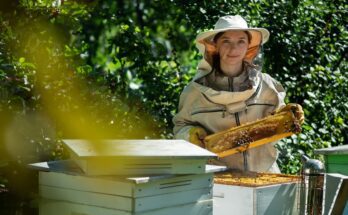Soil solarization is a pest control method without the use of chemicals. This practice requires the use of high temperatures created by the energy of the sun’s rays. An essential component of this procedure is soil moisture for improved thermal conductivity. The earth covered with the film heats up under the sun’s influence, in the process of which the biological, physical, and chemical properties of the soil change.
This process aims to improve the health and fertility of the soil, which is essential for increasing yields. In this article, you can learn more about soil fertility’s importance. Solarization of the soil also helps to get rid of pests, as they are more defenseless to attack by soil microorganisms when exposed to moisture and heat.
Soilborn pathogens
It is necessary to choose the right time and temperature to get the maximum benefit. Killing most types of mesophilic fungi, for example, can take about a month if the temperature is around 99 F (37 C). At the same time, up to 90% of the population of these pathogens can be destroyed in 1-6 hours if they are exposed to temperatures of 117 F (47 C).
Typical solarization temperatures can reach 95–140 F (35–60 C). It depends on various parameters, including soil type and depth, region, season, and other factors. Volatile compounds in the soil are changing under the impact of high temperatures. These compounds contribute to the destruction of weakened organisms, as they are toxic.
Weed control
By solarizing the soil for 2-4 weeks at around 99 F (37 C), farmers can almost eliminate annual weeds. This activity has the most significant impact on the topsoil. The procedure helps to get rid of many weeds, except for Cuscuta, bindweed, or purple nutsedge. It is recommended to stimulate the growth of weeds with watering a few weeks before the procedure.
Beneficial microbes
Unlike pathogens, actinomycetes and other types of thermophilic and thermotolerant biota survive and can thrive in solarized soil. The population of useful and nitrogen-fixing microorganisms may temporarily decrease after the procedure, but they recover quickly. High temperatures can also temporarily reduce the number of legume nodules, including peas or beans.
Plant nutrients
Another advantage of soil solarization is the growth of a population of good bacteria. In addition, this treatment increases the availability of minerals and nutrients, including nitrogen, calcium, and magnesium. These substances will make a significant contribution to increasing yields in the future.
Biosolarization
Experienced farmers can also introduce organic materials into the soil. These can be crop residues and composts for additional nutrition and treatment.
Decomposing organic materials cause chemical changes resulting in certain natural products, including organic acids.
The acids are toxic to soil organisms, so the farmers should not cause transient soil acidification. You have to wait for suitable soil conditions. The treated soil can also be detoxified by irrigation to move the acids further below the root zone. Research on the biosolarization impact is ongoing.
Final thoughts
Solarization is an activity aimed at improving the health and quality of the soil. For the effectiveness of the method, you should first take care of irrigation. The solarization procedure makes it possible to get rid of weeds and pathogens, thanks to the exposure to the sun’s heat and the attack of soil microorganisms. Thus, it is possible to effectively deal with various factors that harm the productivity of fields without the use of pesticides and multiple chemicals.
FAQ
What is soil solarization?
Soil solarization is a pest control method without the use of chemicals. This practice requires the use of high temperatures created by the energy of the sun’s rays. An essential component of this procedure is soil moisture for improved thermal conductivity.



